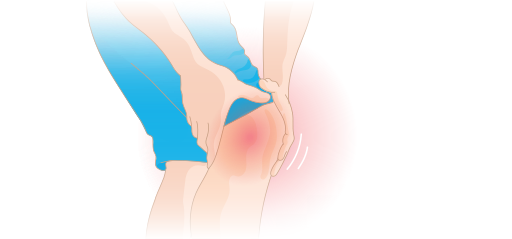
Until now, it was commonly thought that osteoarthritis was virtually unavoidable. As people get older, years of wear and tear on knee joints naturally take their toll, causing cartilage to wear down. This, then, allows roughened joint surfaces to rub together, causing the familiar symptoms of inflammation and pain.
However, a new study published in the journal Proceedings of the National Academy of Sciences reveals that other factors may be involved – factors that are well within our control and may be used to help prevent arthritis from taking hold.
By looking at skeletons, both ancient and modern, Professor Daniel Lieberman of Harvard University has found that the incidence of arthritis is now twice as common as it was prior to the 1950s. It’s not just because our population is aging either, or because the rate of obesity is rising. Even after correcting for those factors, the increased incidence for arthritis remained.
These numbers have convinced Dr. Lieberman that “wear and tear” may not be the true cause of the problem. His research is supported by several long term studies that were completed around the year 2009.
One study was conducted at Stanford University and tracked nearly 1,000 members of a running club, along with non-runners, for 21 years. The data tabulated in that study showed that the runners were no more likely to develop osteoarthritis than the non-runners, despite the increased wear and tear on their knee joints.
A second study completed in 2007 followed 1,279 elderly residents of Framingham, MA. Here, the results were similar: the most active residents had no greater incidence of arthritis than the non-active residents, showing that physical activity very likely had little effect on the condition. At the time, this news was absolutely revolutionary, and overturned decades of speculation that had no doubt prevented many people from taking up running, and had also greatly enriched the makers of high-quality, cushion-soled running shoes.
A third study, published in the journal Arthritis and Rheumatism in 2007 showed that people who exercised vigorously had thicker and healthier knee cartilage than their sedentary peers. Although study participants weren’t followed to see who would develop arthritis and who would not, it was theorized that based on these results, those who exercised would probably have fewer joint problems as they aged.
With this new Harvard study of skeletons, data is increasingly showing that, far from causing osteoarthritis, physical activity must help to prevent it. It now appears that the regular pumping action of running and other high-impact exercises works a lot like lymph circulation. It’s only when your feet hit the pavement and the synovial fluid in the joints squishes out, that it comes into contact with greater oxygen and nutrients from your blood. When your body becomes airborne again, this newly enriched fluid is sucked back in, nourishing and strengthening the cartilage and preventing it from breaking down.
Strong muscles also appear to play a part. In another study published this year in the journal Arthritis Care and Research, researchers found that women with weaker quadriceps muscles (the muscle on the front of the thigh), had a 47% greater chance of developing knee arthritis than women whose muscles were stronger. Strong hamstrings were also important. The researchers concluded that strong quadriceps muscles and hamstrings may prevent osteoarthritis by acting as shock absorbers and stabilizers for the knee joint.
While dietary factors and early sports injuries may still play a part, it seems clear that there’s no reason to avoid running or jumping exercises if you want to protect your knees. In fact, the more you move, the better off your knees will be.
For those who already have osteoarthritis, continued movement should help to ease pain. You may prefer to sit as much as possible, but according to Chinese medicine, the stimulation of blood circulation is important for relieving pain. In this case, vigorous exercises that pound your knee joints should be avoided. Instead, you should try to perform gentle, deep breathing exercises, like yoga, tai chi, or our own Y-Dan exercises, available on DVD. These slow and gentle exercises not only increase circulation, but also improve balance, which helps to prevent falls, and also straighten posture, improve coordination, and promote relaxation, which reduces feelings of stress.
About the Author: Rebecca Wong has a BA in English Literature from the University of Waterloo and has been working in the herbal business since 2000. She studied at the Ontario College of Traditional Chinese Medicine under respected authorities Paul Des Rosiers and Vu Le, and graduated from the East West School of Planetary Herbology under Michael Tierra. She received training as a yoga teacher at The Branches in Kitchener/Waterloo, and therapeutic yoga teacher training from the School for Somatic Soulwork under Deniz Aydoslu. She now teaches yoga for anxiety, depression and burnout at Rebecca's Restful Yoga Studio in Toronto.
